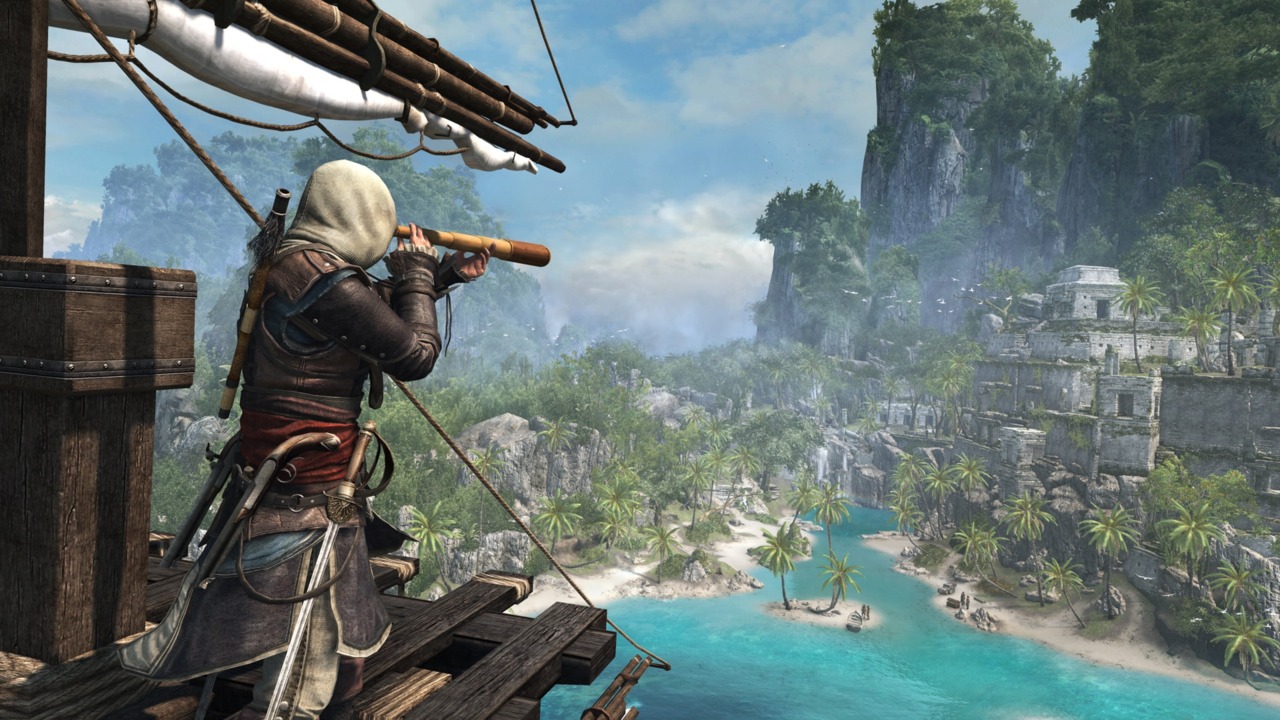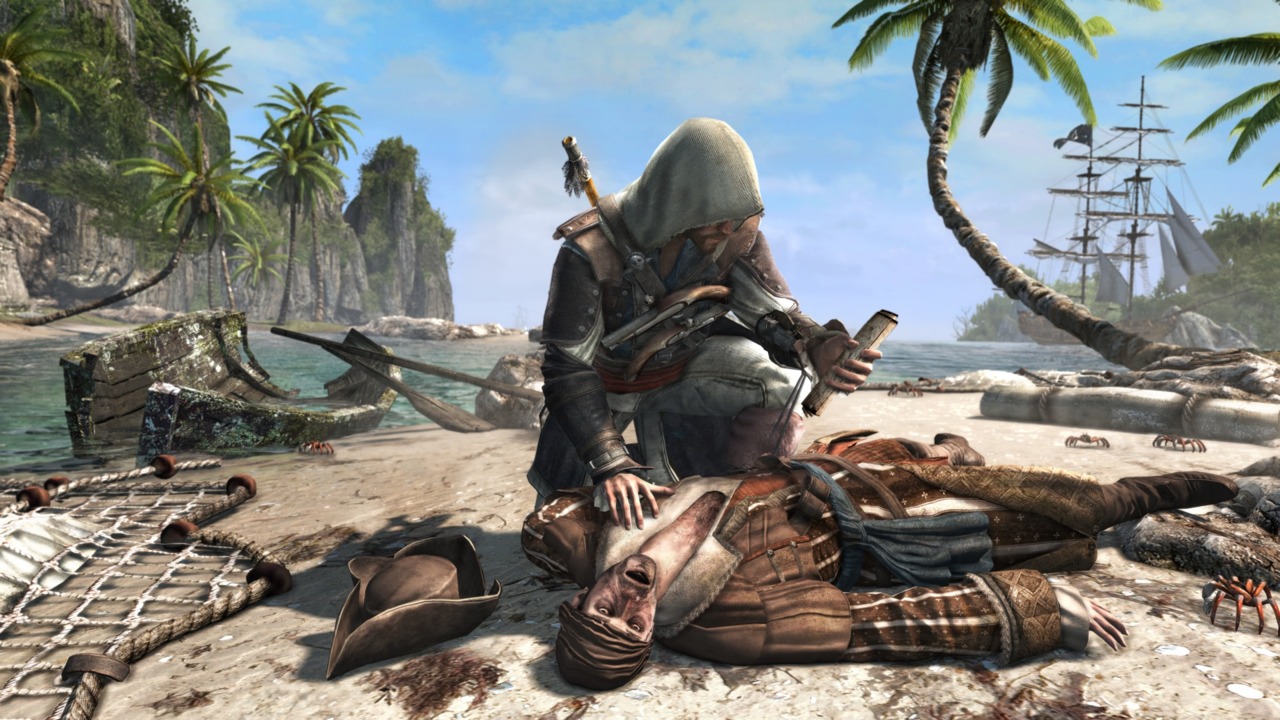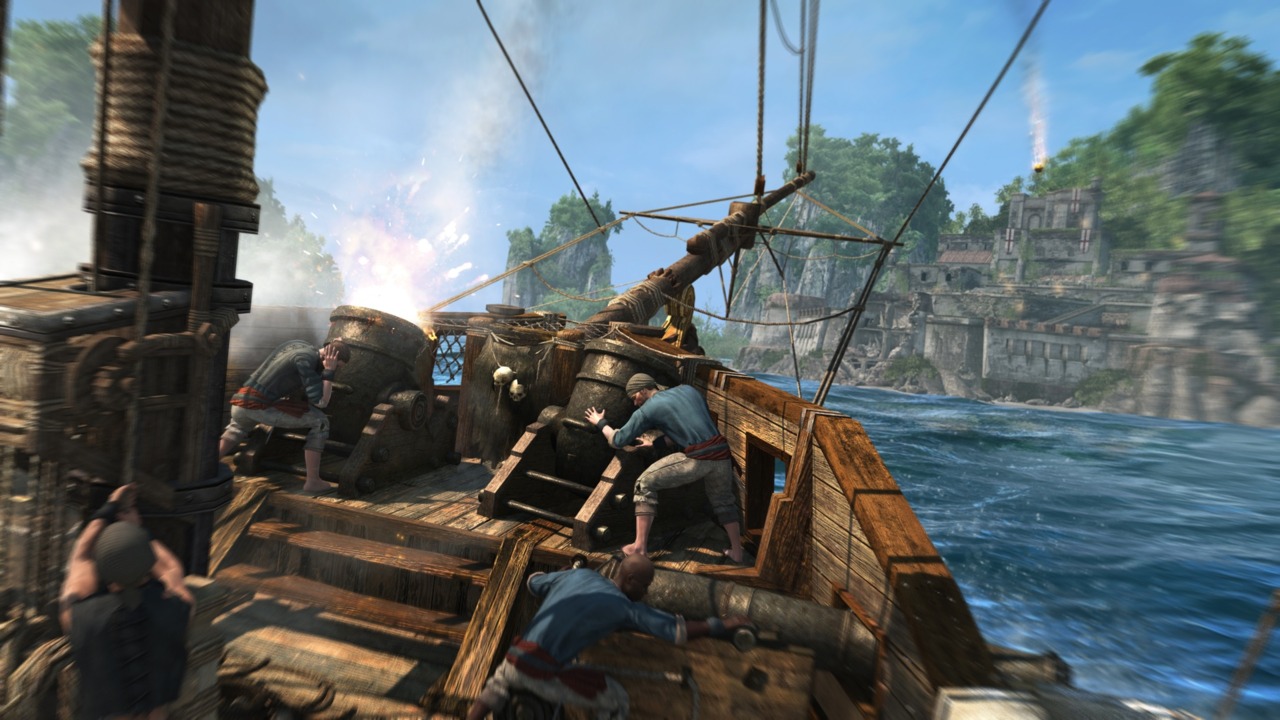Assassin's Creed IV: Building a Fictional Tale in an Authentic World
Kevin VanOrd sits down with three talents to unveil the amount of research and care being poured into Assassin's Creed IV: Black Flag.
At San Diego Comic-Con 2013, I boarded a pirate ship and stared down three strong-willed scallywags, yet somehow managed to escape unscathed.
Well, I wasn’t actually in any real danger. That ship was a repurposed sea vessel representing the Jackdaw from Assassin’s Creed IV: Black Flag, and those scallywags were passionate and talented men striving to make the upcoming sequel as dramatic as possible, while still keeping its world grounded in the reality of the Caribbean of the 18th Century. I didn’t emerge from my time on the Jackdaw with a peg leg or a wisecracking parrot, but I did come away with a better understanding of the effort that goes into making a modern-day blockbuster like Assassin’s Creed.
Starfield May Update Disney Dreamlight Valley – Thrills & Frills Update Trailer LEGO Fortnite | Star Wars Rebel Adventure Cinematic Trailer Apex Legends - Official Alter Legend Animated Reveal Trailer | "Based on a True Story" Batman: Arkham Shadow | Official Cinematic Teaser Trailer Mullet MadJack - Official Gameplay Trailer Playing Mortal Kombat with Guitars - On the Front Line SXSW 2016 Bloody Combat Builds Empires in Aztez - On the Front Line SXSW 2016 Lunar Mysteries Abound in Deliver Us The Moon - On the Front Line SXSW 2016 A Tim Burton-inspired Journey Into Hell - On the Front Line SXSW 2016 Sleek Simplicity Breeds Deadly Complexity in Inversus - On the Front Line SXSW 2016 You've Never Ruled a Realm Like Kingdom's Before - On the Front Line SXSW 2016
Please enter your date of birth to view this video
By clicking 'enter', you agree to GameSpot's
Terms of Use and Privacy Policy
Scallywag 1: Darby McDevitt, Lead Writer
This wasn’t my first discussion with McDevitt, who outlined for me the ins and outs of writing new protagonist Edward Kenway a few months back. This time, however, I got a clearer glimpse of the process of crafting a world grounded in reality. First, there are the journeys--trips to the Dominican jungle, to Havana, to the high seas of the Caribbean. The storytelling process begins with research, and at this stage, the concept isn’t even a sure thing; the development team first has to create target renders and pitch the game to Ubisoft leadership.
It doesn’t sound as if Assassin’s Creed IV was a difficult concept to pitch, however. The era was ripe with colorful characters and the region was flooded with immense riches, thanks to multinational trade routes. Furthermore, during that time period, the father of Assassin's Creed III’s Haytham Kenway would have been in his 20s, which would have made him the right age for the pirating lifestyle. And like Assassin’s Creed IV’s other characters, Haytham’s father Edward Kenway would have been a product of his times. Many of Kenway’s pirating peers would have been sailors, possibly from a navy; most of them would have been single; and the majority of them would have been drunks. Not only were the time and setting brimming with potential, but it also meant that Ubisoft Montreal would expand on the naval combat they introduced in Assassin’s Creed III. It was a perfect storm of possibilities.
Once the game was greenlit, it was time to continue the researching process before entering the design and scripting phase. Game development and script writing do not happen independently, however, but are part of an ongoing dialogue between the writers and the designers. McDevitt showed me the tool the team uses to document their work, which resembles a souped-up version of screenwriting software Final Draft. Here, every sequence is mapped out from a story and design perspective, though not every idea sees the light of day. And sometimes, they are the ideas the writer holds most dear.
Appropriately enough, throwing out a beloved idea for the greater good is known as “murdering your darlings.” And doing so has broken many an author’s heart.
But when it comes to writing, harsh truths must be faced. Sometimes, scenes or missions aren’t working well. Sometimes, they bog down the pacing, or unnecessarily bloat the narrative. And sometimes, a cutscene isn’t the right tool for the job--not when the moment calls for action. McDevitt never wants the player to be watching a cutscene, wishing he or she could join in on the fun; whenever possible, story beats are communicated through gameplay, not through noninteractive scenes.
And so the design and writing staff pass the ideas back and forth, iterating and reiterating, arguing and submitting in turn, until the ideas are implemented and tested. As it turns out, even game designers have to murder their darlings from time to time. McDevitt shared how the design team looked at the map of the Caribbean and plotted out a perfect arena within which the gameplay might take place. The problem? The region they saw as the most apt for the intended gameplay loop didn’t accurately reflect how and where actual pirates of the period would be spending their time. The back-and-forth then continued--designing, then scripting, then repeating--until the teams had a concept they could both embrace.
Scallywag 2: Matt Ryan, Actor
As it happens, Ubisoft is an underhanded lot. When actor Matt Ryan auditioned for the part of Edward Kenway, he didn’t know the character starred in an Assassin’s Creed game. Instead, he thought he was trying out for a role on a television program entitled “Black Flag.”
Ubisoft keeps its casting calls a secret. After all, the publisher doesn’t want actors’ audition scripts to leak, possibly spoiling story points or other vital information before Ubi is ready to share with the rest of the world. In fact, the casting was done so early in the development process that the team hadn’t yet settled on a name, though eventually the code name “Black Flag” would become Assassin’s Creed IV’s subtitle.
I don’t know if Ryan will be the perfect Edward Kenway, but the man certainly commands a room just by existing within it. He speaks in a lovely British lilt that immediately demands attention, and it’s hard to take your eyes off his dark features and thick eyebrows. It’s also easy to get lost in his stories of his involvement with Assassin’s Creed IV, beginning with his tales of motion capture. In this game, as in many others, the actors don’t just provide voices: they act out their roles with motion-capture nodes attached to their bodies and a camera strapped to their heads, each gesture and facial tic recorded for use in the game.
Ryan shared how hyperconscious he was of the head camera for a while, unsure of where to direct his eyes and how to behave naturally with an electronic apparatus staring him in the face. But in time, the experience became liberating, merging the immediacy of live theater with a television-style sound stage. Because the entire scene is recorded in full, the actors cannot just stop mid-sentence and start over again if they make an error or are unhappy with a line reading. (Doing so would make a lot of unnecessary drudgery for the game’s animators.) Furthermore, there are no stage cameras to play to: the motion capture technology allows the actors to perform without regard for where cameras might be pointing. Except for the baubles attached to his body and the hardware strapped to his noggin, Ryan found the performance style remarkably freeing.
Starfield May Update Disney Dreamlight Valley – Thrills & Frills Update Trailer LEGO Fortnite | Star Wars Rebel Adventure Cinematic Trailer Apex Legends - Official Alter Legend Animated Reveal Trailer | "Based on a True Story" Batman: Arkham Shadow | Official Cinematic Teaser Trailer Mullet MadJack - Official Gameplay Trailer EARTH DEFENSE FORCE 6 - Official Release Date Reveal Trailer Street Fighter 6 - Akuma Arrives! Fighting Pass Reveal Trailer SMT V: Vengeance Is Much Bigger Than You Think Which Fallout Game You Should Play First Funko Fusion - Official Reveal Trailer Star Wars: Hunters -Official Launch Date Reveal Cinematic Trailer
Please enter your date of birth to view this video
By clicking 'enter', you agree to GameSpot's
Terms of Use and Privacy Policy
As for playing Edward, Ryan didn’t adopt an unrealistically thick accent, the kind you associate with pirates. (The cliched accent we know and love was based on Robert Newton’s interpretation of Long John Silver in the film Treasure Island, and was modeled after England’s West Country accent.) Pirates didn’t just come from the West Country, but indeed from Wales (Bartholomew Roberts), Ireland (Anne Bonny), and, of course, outside of the British Isles. Edward’s speech patterns are not built around “yarrrs,” but are certainly fiercer and more direct than Ryan’s natural soft-spoken cadence. That’s as it should be, given how much fiercer Edward’s fighting style is from the Assassins that came before him.
Scallywag 3: Mike Loades, Weapons Expert
I feel reasonably certain that Mike Loades’ home must be decorated with rapiers and rifles, and not just because of his clear passion for weapons of all types. Loades told me of a number of deadly implements that belong to his personal collection, including a homemade blowgun of such a length that you could slide it through the underbrush and blow a murderous dart at your foe with him or her being none the wiser.
That kind of sneaky violence may not be the way of the samurai, but it certainly was the way of the Caribbean’s privateers, who picked up plenty of tricks on their travels, including a bit of blowgun expertise from the coast of South America. In fact, while the Assassin’s blade as we know it is a fictional weapon, similar mechanical appliances were in use at the time. Pirates loved those kinds of gadgets, just as they loved weapons that were two apparatuses in one. But the weapon of choice was the cutlass, sometimes even two, perhaps with knuckle guards to bash an opponent’s skull before finishing him off with a final strike.
Mike didn’t just make sure that Assassin’s Creed IV’s weapons are authentic, but that Edward uses them appropriately. Pirates had little use for flamboyant flourishes, and Edward’s animations reflect that. The team started with Connor’s animations from Assassin’s Creed III and gradually adjusted them to account for Edward’s character and the fighting methods of the era. Edward isn’t one for showing off; he gets to the point when face to face with his attackers. Forget the excess twirls.
As for that blowgun, well, Edward’s isn’t so long that he can slide it through the foliage, but it does allow him to put enemies to sleep or enrage them enough to attack their comrades. The single-player demo of the game I saw after my discussions with McDevitt, Ryan, and Loades gave me hope that Black Flag’s stealth options will be more effective--and more satisfying--to perform. In fact, the demo featured little in the way of direct combat, instead focusing on surreptitious takedowns, including a good-ol’ Ezio Auditore double-blade assassination.
The influence of Ubisoft’s own Far Cry 3 could be keenly felt in the demo. For instance, you can disable a bell that an alerted guard might use to call attention to your presence, and there are even explosive barrels you can ignite to distract foes (or just eliminate them entirely). According to McDevitt, the entire stealth gameplay loop has been tightened up considerably. Completing objectives sneakily shall reward you with more gold and other rewards, and snipers can desync you with just a few hits. As if to reinforce just how viable stealth will be in Assassin’s Creed IV, the demo ended with Edward not stabbing his target from behind or swashbuckling his way to victory, but simply pickpocketing the key he needed and sneaking off before the object could be missed.
Three scallywags. Three points of view. One expensive game. After the interviews, a party raged across the boat, but I chose to sneak away, Edward Kenway-style. Fortunately, I was able to escape without reaching for my blowgun, and every attempt to pickpocket partygoers as I slipped past was met with unfortunate glares. Clearly not everyone enjoyed my attempt to put into practice what I learned that evening.
'Got a news tip or want to contact us directly? Email news@gamespot.com




Join the conversation